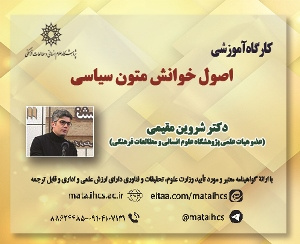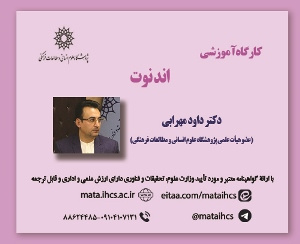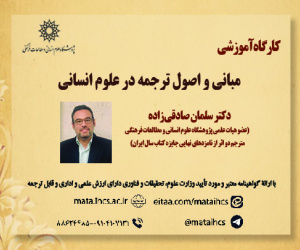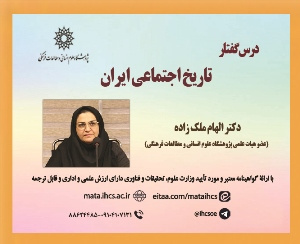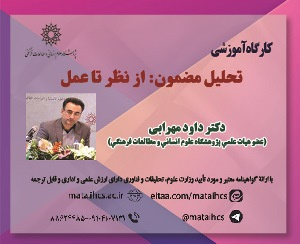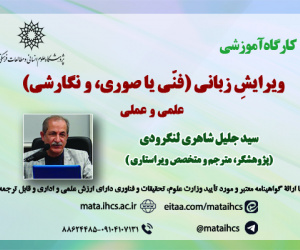چگونگی صورت و معنای رقم نگارگران در «مرقع گلشن» (مطالعه موردی پنج نگاره مرقوم) (مقاله علمی وزارت علوم)
درجه علمی: نشریه علمی (وزارت علوم)
آرشیو
چکیده
بیان مسئله: با نگاه به تحولات نگارگری در ایران شاهد رواج رقم نگارگر یا درج نام و نشان وی از دوران تیموری در ایران و سرزمین های متأثر از فرهنگ پارسی همچون هند گورکانی هستیم. از میان آثار این دوران، «مرقع گلشن» به دلیل نظارت مستقیم جهانگیرشاه (گورکانی) در گردآوری قطعات، از دو جنبه تعداد آثار مرقوم و شیوه رقم زنی متفاوت با مکتب اصفهان، جایگاه ویژه ای دارد. سؤال اصلی این است که در مرقع گلشن و در بستر فرهنگی دوران جهانگیرشاه، نگارگران به کدام صورت و در چه ساختار ترکیب بندی رقم یا امضای خویش را نگاشته و در فرم رقم آنان چه معانی ای مستتر است؟هدف: شناخت شیوه قرارگیری رقم در نگاره های مرقع گلشن به لحاظ صوری و ساختاری و کشف معانی پنهان آن؛ ازجمله آشکار کردن ارتباط میان نحوه ترکیب بندی رقم در اثر، با انگیزه نگارگر در بازنمود موقعیت اجتماعی خویش و برقراری روابط تعاملی (بینافردی) با بیننده به واسطه شیوه رقم زنی است.روش پژوهش: در پژوهش حاضر با بهره گیری از منابع کتابخانه ای و مشاهده مستقیم نگاره ها و حاشیه های مرقوم در مرقع گلشن، اطلاعات گردآوری؛ سپس پنج نمونه غیرتصادفی از آثار مرقوم انتخاب و هر یک متناسب با اهداف پژوهش به روش خوانش تصویری بر پایه سه فرانقش ترکیبی، بازنمودی و تعاملی، تحلیل شد.یافته ها: در بررسی نگاره های مرقوم سه نتیجه حاصل گردید: ابتدا پنج الگوی ترکیب بندی به لحاظ ساختاری در رقم نگاره های مرقع مشخص شد؛ دوم ارتباط روایی و مفهومی میان نحوه ترکیب بندی و محتوا کلامی رقم ها با جایگاه اجتماعی نگارگران در دربار و نسبت آنان با تولید مرقع نمایان شد و در نهایت، با مشاهده طرز چینش رقم نگاره ها در زاویه، فاصله و اندازه متفاوت، انگیزه نگارگران در تعامل با بیننده آشکار گردید.The Form and Meaning of the Painters' Signature in "Gulshan Album (Muraqqa'-e Gulshan)" (Case Study: Five Signed Paintings)
Statement of the Problem: Looking at the developments of painting in Iran, we have witnessed the spread of the painter's signature or the insertion of his name since the Timurid period in Iran and the lands influenced by Persian culture such as Gurkan India. Among the works of this period, "Gulshan Album (Muraqqa'-e Gulshan)" has a special place because of the direct supervision of Jahangirshah (Gurkan) in the collection of pieces, from the two aspects of the number of signed works and the method of signature, which differs from the Isfahan school. The key question is "In "Gulshan Album (Muraqqa'-e Gulshan)" and in Jahangirshah's era, in which way and in what structure did the painters design their signature and what meanings hide in their signature form"?
Objective: To identify the placement method of the signature in Gulshan Album's paintings in terms of form and structure and to discover its hidden meanings which is to reveal the relationship between the composition of signatures in the work, with the artist's motivation in representing his social position and establishing interactive (interpersonal) relationships with the viewer through the signature method.
Research Method: In the current research, by using library resources and directly observing the paintings and signed margins of the inscriptions in the Gulshan Album, the data was collected; Then, five non-random samples of signed works were selected, and each one was analyzed according to the research objectives by visual reading method based on the three metafunctions of composition, representation, and interaction.
Results: Three results were obtained in the examination of signed paintings. First, five compositional patterns were identified in terms of structure in the signed paintings; Second, the narrative and conceptual relationship between the composition method and the verbal content of the signatures with the social position of the painters in the court and their relationship with the production of Gulshan Album was revealed. Finally, by observing the arrangement of signed paintings in different dimensions, distances, and sizes, the motivation of the painters in interacting with the viewer was revealed.
